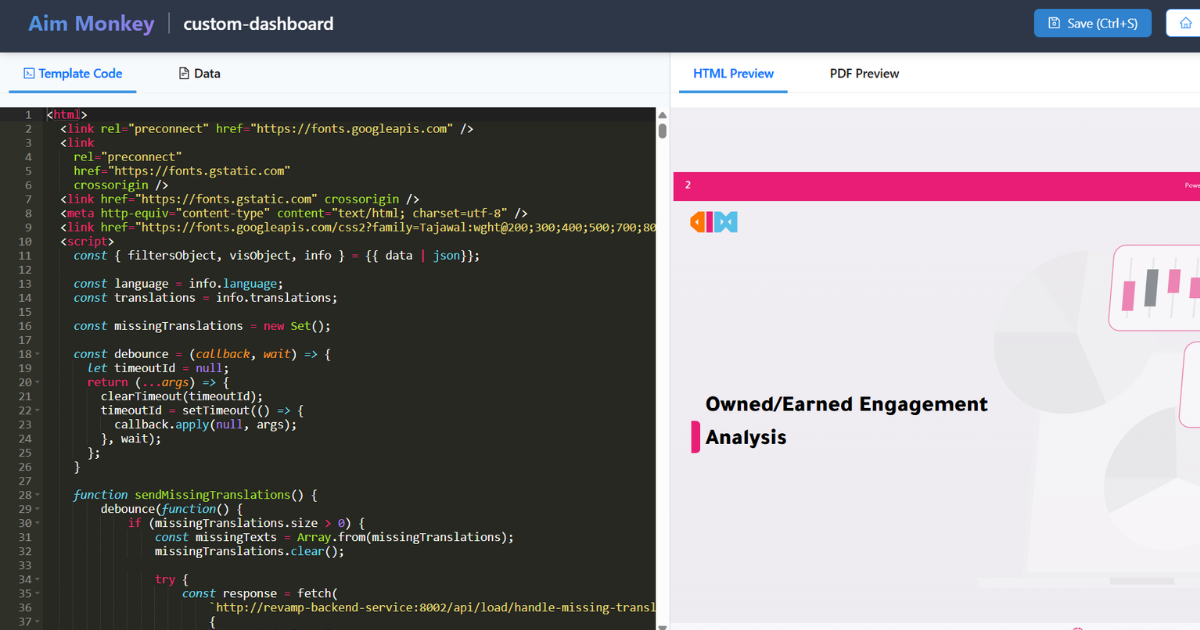Sentiment analysis is transforming the way companies interact with customers, make decisions, and improve their products and services. But how exactly is it useful for businesses? Let’s dive into this powerful tool and explore how is sentiment analysis useful for companies and provide valuable insights to drive growth and enhance customer experience.
How is Sentiment Analysis Useful for Companies?

What is Sentiment Analysis?
At its core, sentiment analysis involves using natural language processing (NLP) and machine learning techniques to analyze text data and determine the sentiment behind it. This text data can come from various sources such as social media, customer reviews, surveys, and even emails. By categorizing sentiments as positive, negative, or neutral, companies can gain insights into how people feel about their products, services, or brand.
How is Sentiment Analysis Useful for Companies?
In today’s digital age, understanding how customers feel is crucial. Sentiment analysis helps companies monitor public opinion, gauge customer satisfaction, and react proactively to changes in perception. Whether it’s through feedback on social media or comments in reviews, sentiment analysis provides a lens through which businesses can see their strengths and weaknesses, allowing them to refine their strategies accordingly.
Understanding the Basics of Sentiment Analysis
What Does Sentiment Analysis Involve?
Sentiment analysis typically involves scanning large volumes of text data to identify underlying emotions. This could range from simple positive or negative words to more complex sentiment indicators such as sarcasm or irony. Machine learning models are often trained to differentiate between various forms of sentiment, making the analysis more precise.
Types of Sentiment Analysis: Positive, Negative, and Neutral
- Positive Sentiment: Indicates favorable feelings about a product, service, or brand.
- Negative Sentiment: Reflects dissatisfaction or frustration.
- Neutral Sentiment: Represents neutral or impartial comments that don’t show strong feelings one way or the other.
Sentiment Analysis Tools and Techniques
There are several sentiment analysis tools available, such as Brandwatch, AIM Insights, and MonkeyLearn. These tools use algorithms to analyze and classify customer feedback into sentiment categories, giving companies easy access to valuable insights.
Benefits
Enhancing Customer Relationships
By continuously monitoring customer sentiment, companies can stay on top of how customers are feeling. This allows for proactive engagement, where businesses can address concerns before they escalate, leading to better customer loyalty and satisfaction.
Improving Marketing Strategies
Sentiment analysis offers invaluable insights into how well marketing campaigns are resonating with the target audience. It allows companies to identify the emotional triggers behind their messaging and fine-tune their campaigns accordingly. By understanding customer emotions, marketing can be personalized for greater impact.
Gaining Competitive Advantage
Companies that leverage sentiment analysis can gain a competitive edge by understanding customer preferences and behavior better than their competitors. This information can help businesses make smarter decisions, such as adjusting pricing strategies or introducing new features that meet consumer needs.
Sentiment Analysis and Customer Feedback
Analyzing Customer Reviews
Customer reviews are goldmines of information for sentiment analysis. Whether it’s feedback on a product or comments about a service experience, sentiment analysis can reveal how customers truly feel. Positive feedback can be used to highlight strengths, while negative feedback can identify areas needing improvement.
Handling Negative Feedback Effectively
Negative sentiment can sometimes be the hardest to address, but sentiment analysis provides a structured way to manage it. By quickly identifying negative comments, businesses can address issues in real-time, turning unhappy customers into loyal ones.
Turning Feedback into Actionable Insights
Once sentiment analysis categorizes feedback, businesses can extract actionable insights from it. Whether it’s improving a product based on feedback or tweaking a marketing message, sentiment analysis ensures that businesses respond in a way that truly resonates with their customers.
Sentiment Analysis in Social Media Monitoring
Tracking Brand Sentiment Across Social Media
Social media platforms are prime spaces for sentiment analysis, as people often share their thoughts and experiences openly. By monitoring social media sentiment, businesses can understand public perception of their brand and track changes over time.
Identifying Trends and Conversations
Sentiment analysis can also identify key trends and conversations happening around a brand, allowing businesses to pivot strategies when necessary. For example, if a new product launch is receiving negative feedback, the company can adjust their messaging or address concerns quickly.
Engaging with Customers Based on Sentiment
Engagement is key to fostering relationships, and sentiment analysis enables companies to personalize their responses. Whether responding to positive comments or addressing complaints, companies can craft thoughtful replies that strengthen the bond with their customers.
Impact on Brand Reputation Management
Proactively Managing Public Perception
With sentiment analysis, companies can proactively track how their brand is perceived. By identifying negative trends early, they can manage their reputation before issues escalate into full-blown crises.
Sentiment Analysis for Crisis Management
During a crisis, understanding public sentiment is crucial. Sentiment analysis can quickly reveal how people are reacting to negative news, helping businesses formulate an appropriate response and mitigate potential damage to their brand reputation.
Measuring Brand Health with Sentiment Insights
Sentiment analysis provides a continuous snapshot of a brand’s health. By analyzing sentiment over time, businesses can monitor changes in public opinion and adjust their strategies to ensure that their brand remains strong and positive in the eyes of their audience.
Sentiment Analysis in Product Development
Using Customer Sentiment to Shape New Products
Customer feedback is invaluable for product development, and sentiment analysis ensures that businesses are tapping into their customers’ emotions and preferences. By aligning product development with customer sentiment, companies can create products that truly meet their needs.
Identifying Pain Points for Improvement
Negative sentiment often points to pain points in a product or service. By analyzing these sentiments, companies can pinpoint specific areas that need improvement, whether it’s a design flaw or a functional issue, helping them create better products over time.
Enhancing Customer Satisfaction with Data-Driven Decisions
By incorporating sentiment analysis into product development, companies make data-driven decisions that are more likely to resonate with their target audience. This leads to higher customer satisfaction and greater brand loyalty.
Sentiment Analysis and Market Research
Gauging Public Opinion on Market Trends
Sentiment analysis can provide valuable insights into market trends, helping businesses understand consumer opinions and preferences. Whether it’s a new market or an established one, sentiment data can inform business strategies and product offerings.
Understanding Consumer Needs and Preferences
Sentiment analysis helps companies tap into the emotional drivers behind consumer behavior. By understanding how consumers feel about different products or services, businesses can tailor their offerings to meet those needs.
Using Sentiment Data to Inform Business Strategy
Incorporating sentiment data into business strategy ensures that companies are staying aligned with consumer expectations. It allows for more informed decision-making, ensuring that strategies are based on real insights rather than assumptions.
How Sentiment Analysis Helps in Customer Support
Improving Customer Service by Analyzing Sentiments
Sentiment analysis can help customer support teams prioritize cases based on the urgency and emotion expressed by customers. By identifying frustrated or upset customers, businesses can offer faster resolutions, improving overall customer service.
Prioritizing Support Requests Based on Sentiment
Sentiment analysis helps businesses understand which support requests require immediate attention. A customer expressing frustration on social media might need a faster response than someone merely asking for a product recommendation.
Creating a Personalized Customer Experience
With sentiment analysis, companies can create a more personalized customer experience by tailoring responses based on the sentiment expressed. This leads to a more empathetic approach, which improves customer satisfaction.
Challenges in How is Sentiment Analysis Useful for Companies?
Data Quality and Accuracy
While sentiment analysis is powerful, it is not without challenges. One of the main hurdles is ensuring data quality and accuracy. Misinterpretation of sentiment can occur, especially when dealing with complex emotions or sarcasm.
Ambiguity in Text and Contextual Analysis
The ambiguity of language poses another challenge. Words can have different meanings depending on context, and sentiment analysis tools must be sophisticated enough to account for nuances like irony or humor.
Integrating Sentiment Data with Other Business Operations
Integrating sentiment analysis insights into broader business strategies and operations can be a complex task. Businesses need the right tools and expertise to seamlessly incorporate sentiment data into their workflows.
Future Trends in How is Sentiment Analysis Useful for Companies?
Trends in Sentiment Analysis Technologies
As technology evolves, so does sentiment analysis. Advancements in artificial intelligence (AI) and machine learning are enhancing sentiment analysis capabilities, making it even more accurate and insightful.
The Role of AI and Machine Learning in Enhancing Sentiment Analysis
AI and machine learning algorithms are increasingly used to improve the accuracy of sentiment analysis, allowing businesses to gain deeper insights into customer emotions and preferences.
The Growing Importance of Sentiment Analysis in Business
The future of sentiment analysis looks bright. As businesses continue to recognize its value, the demand for sentiment analysis tools will only grow, making it an essential component of modern business strategies.
Conclusion
Sentiment analysis is no longer a luxury for companies—it’s a necessity in today’s competitive landscape. By understanding customer emotions and staying ahead of potential challenges, businesses can create meaningful connections and drive success.
Ready to see how sentiment analysis can revolutionize your company? Request a demo from AIM Technologies today and discover the difference firsthand!
FAQs
What is sentiment analysis in simple terms?
It’s the process of determining whether text conveys positive, negative, or neutral emotions.
How does sentiment analysis differ from text analysis?
While text analysis focuses on extracting information, sentiment analysis gauges emotional tone and intent.
Can sentiment analysis work in multiple languages?
Yes, with the right tools and training, sentiment analysis can handle multilingual data effectively.
What industries benefit most from sentiment analysis?
Industries like retail, healthcare, finance, and entertainment benefit greatly from sentiment insights.
What is the best tool for sentiment analysis?
The best tool depends on your needs, but enterprise solutions like AIM Insights offer robust and tailored options.




